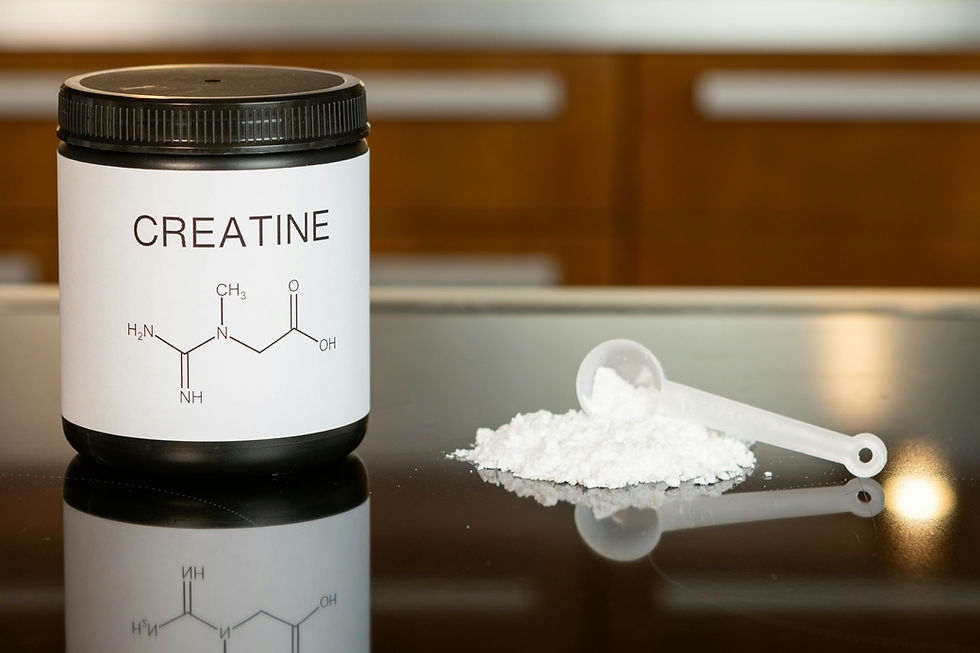Lingo CGM - is it worth it?
- Amanda Heading
- Mar 19
- 4 min read

Okay, so here's my assessment of the Lingo continuous glucose monitor (CGM). I've been trialling it for two weeks to assess what dietary and lifestyle factors affect my blood glucose levels. Because everyone is different in their responses to these.
Lingo CGM is designed by Abbott, who make the Freestyle Libre CGM (for those with diabetes). The Lingo CGM is for anyone who is NOT diabetic, but their blood glucose levels may be creeping up, and they want to do something about it. Or, you suffer with fatigue and the dreaded mid-afternoon slump, or you have a high-powered job and need excellent mental focus and clarity, or you simply or you want to stay as healthy as possible and are happy to use your diet and exercise towards this. Or you're a competitive athlete and are looking for that extra 'marginal gain' to increase your performance by ensuring optimum energy levels.
If any of those descriptions relate to you, then read on...
Whilst the Lingo needs a bit more development regarding its features and useability, if you have an iphone 11 or later, and live in the UK or US, you're pretty much good to go. Future developments include making it compatible with android, as well as health apps and fitness/training devices other than Apple Health, and expanding it to other countries, by the end of 2025.
The app is easy to use and pairs easily with the biosensor you wear. The app gives good visual information on your past and current blood glucose levels, which you see in real time, with the healthy range being between 3.9-7.8mmol/L. You track how this relates to your food intake by inputting the components of your meals, snacks and drinks - this needs more development as the AI-based drop down menu of foods is quite American, for example I had to choose 'cinnamon bun with raisins' instead of a hot cross bun. But you'll know what you've eaten anyway and can cross reference this to your blood glucose graph. Lingo also builds a personalised database of high/low foods you've eaten over time, so you can see at a glance what foods are better for you to eat.
Similarly, you input your exercise and the time you did this, as well as stress or any other incident which might affect blood glucose levels.
You don't have to input any of this, but it does help to see where the 'spikes' in your levels are occurring and what may be the triggers - all in real time. This is especially useful regarding the foods eaten: dark chocolate (+85%) didn't have any affect on my levels, but raw carrots and homemade hummus made it spike. So I won't be eating that as a snack anymore!
And with exercise, you do want your blood glucose levels to rise a bit when you're doing high intensity/long duration training - you want that blood sugar to give you the energy you need - but not too much, otherwise you'll have an energy 'low'. And you're less likely to need high blood glucose levels when you're doing yoga or pilates.
And regarding stress, I've long explained to my clients about the affects of stress, or any physiological or emotional stressor, on your blood glucose levels, due to the extensive and complex hormonal interaction. And the Lingo CGM will show you that too. So when you're using yours, see how your blood glucose remains constant during and after a session of more gentle exercise.
In addition, a daily 'Lingo Count' helps you understand your individual response to food and lifestyle factors, and gives actionable guidance for improving your metabolic health. Your daily Lingo Count target evolves as you make progress, offering personalised advice along the way, as well as recipes and other info.
You can also select to do 'Challenges' where you might 'build a balanced plate', stay hydrated, 'close the kitchen after dinner' or move more. All of these are designed to keep you focussed and you can see the results against your blood glucose profile. It's very clever, easy to use and helps sustain motivation to develop positive habits.
Wearing the biosensor device is barely noticeable - it's easy to apply (normally to the back of one arm), and it comes will full instructions. Once on, it doesn't disrupt sleep and can be worn in the bath/shower, but you do have to be mindful when pulling long-sleeved tops over it, to avoid catching it.
Lingo currently costs £59 for a 2-week biosensor (called 'Lean') and the app is free to download. I think two weeks is enough time to practise with different foods to see what affects each person. You can then purchase another 2-week sensor if you want, or opt for the 'Build' device which gives you two biosensors, to cover 4 weeks (currently £99). If you want longer, this then becomes subscription-based ('Transform'), giving you 6 sensors (currently £289).
I think the cost of a 2-week sensor is good value, especially if you're going to trail different foods and exercise to really see how your blood glucose is affected. I had certain days or times when I was very 'good' or strict with my food intake, and then at other times, I ate anything I wanted (and knew I should avoid) just to see the difference. Lingo didn't tell me anything I didn't know about the latter foods - that they should be avoided if I wanted to maintain health and performance. But it definitely fine tuned my choices of foods, and there were some surprises regarding the 'healthy' options (eg. the carrots). However, it certainly underlined how important it is to control the effects of stress, and I found it super-useful regarding my pre-exercise meals and the energy chews, bars and gels I use whilst training, to sustain my energy levels throughout.
Interestingly, Lingo is banned during international cycling races (unless prescribed for diabetes), as it's deemed to give an unfair advantage! So if you want to fine-tune your training performance regarding what foods/energy aids to use during your sport, and the timing of these, it's certainly worth giving it a go.
For further information about the Lingo and purchase discounts, please contact me at amanda@amandaheading.com



